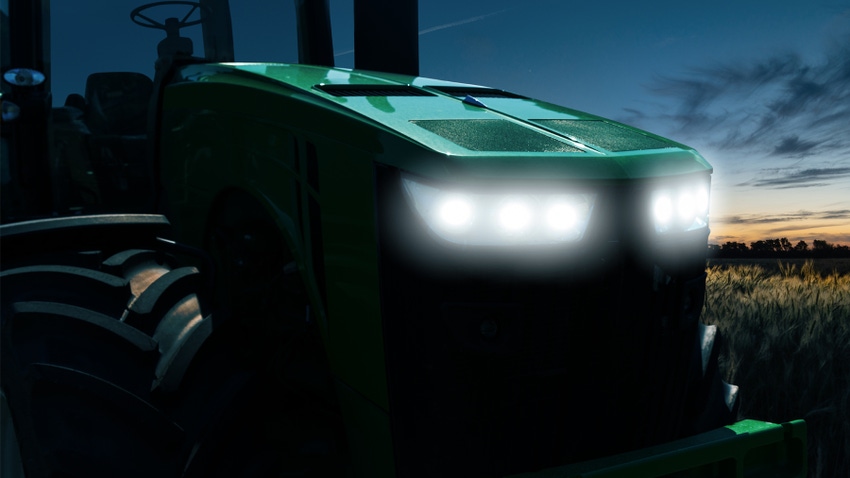
If you are driving around the countryside during planting time, you are sure to see farmers burning the midnight oil, trying to get as much cropland planted as possible before the next rainstorm.
It’s difficult for us to imagine what it was like before farms and implements were electrified and lighted. In the days of real horsepower, most farm operations after dark had to be conducted by kerosene lamp. That’s why farmers rose with the sun, to take advantage of the lighted hours offered by Mother Nature.
That’s also why an ad in the May 4, 1929, Nebraska Farmer caught our eyes. The ad was for a company called Prest-O-Lite, which had developed an interesting innovation for headlamps for automobiles and was marketing these lights for tractors. You have to understand that gasoline-powered tractors were still catching on in the U.S.
Many farmers were still farming solely with horses in 1929, but steam tractors had been in use. The newfangled gasoline tractors were still an infant industry then.
Light the way
Farming in the field at night wasn’t possible, except perhaps when there was a full moon to light the way. So, Prest-O-Lite’s entrance into the tractor-lighting realm was something creative and innovative in 1929.
Founded in Indianapolis in 1904 by partners Carl G. Fisher, James A. Allison and P.C. Avery, the Concentrated Acetylene Co. commercialized a headlight for automobiles that used acetylene cylinders.
“With Prest-O-Lite gas-lighted tractors, thousands of farmers are getting double value out of their machinery,” the ad said. “Under the flood of light from this convenient system, tractors are kept running after dark — and just as efficiently and as profitably as by day.”

LOOKING BACK: This ad for a new tractor lighting system was published in the May 4, 1929, issue of Nebraska Farmer.
The ad said that the lighting system was dependable, and especially designed to withstand the hardest tractor service.
Credited with producing the first workable automobile lights that were also applied to tractors, the company’s headlights contained acetylene gas cannisters used to produce power independently from the car or tractor. The only problem with the system is that it was dangerous. In fact, there were explosions at the factories.
In 1906, Avery withdrew his interest in the company, and Fisher and Allison change the name to Prest-O-Lite. By 1914, they had acquired the Pumpelly Battery Co. and started manufacturing batteries as well.
Eventually, the business was sold to Union Carbide and Carbon Corp., which produced batteries until 1927, when the company was again sold to Electric Auto-Lite Co.
Modern LED
Contrasting the old Prest-O-Lite system to modern lighting systems on tractors is difficult, and we know that it is much safer.
Certainly, having lighting at all on the tractor was an innovation, and farmers were able to take advantage of longer hours in the field. But looking at the new lighting packages offered on the 640-HP 9RX 640 John Deere tractors, the difference is, well, night and day.
As an industry example, there are three potential lighting packages available for the 9RX, including the Select package that includes 18 halogen work lights; or the Premium package that offers 18 LED work lights.
If you want night turned into day, go with the Ultimate package of 24 LED work lights and eight LED convenience lights, to brighten your field operations. But promotional information from John Deere acknowledges that visibility is not all about lighting, but it also includes wipers for the windows, cameras, sunshades and mirrors in the right place.
The Prest-O-Lite system is long gone, but the quest for farmers to be able to put in long hours in the field during crunch time, at planting and harvest, is still there. We can thank Fisher, Allison and Avery for being among the first to commercialize a practical tractor-lighting system, although it could prove to be a dangerous innovation at times.
About the Author(s)
You May Also Like






